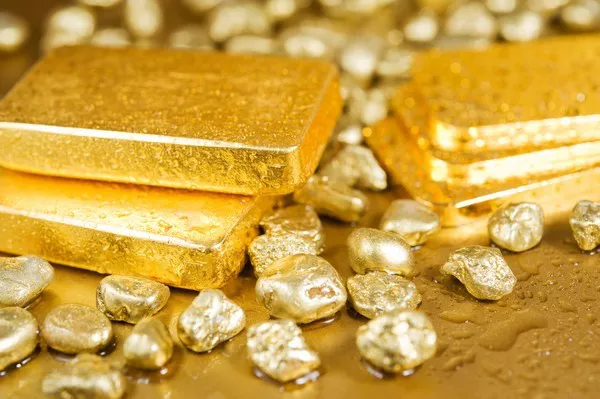The allure of gold has transcended centuries, captivating civilizations with its intrinsic beauty and enduring value. However, within the realm of gold trade, an enigma persists: why is scrap gold often undervalued in comparison to its pristine counterparts? This article delves into the multifaceted dynamics that dictate the pricing of scrap gold, unraveling the intricacies of its market and shedding light on the factors that contribute to its seemingly diminished worth.
Understanding the Basics: What Constitutes Scrap Gold?
Before delving into the complexities of scrap gold pricing, it is imperative to grasp the fundamentals. Scrap gold encompasses any gold item that has been discarded, damaged, or otherwise deemed unfit for its original purpose. This can range from broken jewelry and outdated electronics to dental fillings and industrial byproducts. Despite its altered form or diminished aesthetic appeal, scrap gold retains its intrinsic value due to its gold content, which is measured in purity and weight.
The Purity Predicament: Variations in Gold Content
One of the primary determinants of a piece of scrap gold’s worth is its purity. Gold purity is measured in karats, with 24-karat gold being considered pure gold. However, most gold items are not entirely pure, often alloyed with other metals to enhance durability or modify color. Consequently, the purity of scrap gold can vary significantly, ranging from 9 karats (37.5% gold) to 22 karats (91.7% gold), with each increment influencing its market value.
Market Forces at Play: Supply and Demand Dynamics
The pricing of scrap gold is inherently influenced by the fundamental principles of supply and demand. In times of economic uncertainty or market volatility, the demand for gold as a safe-haven asset typically surges, propelling prices upward. Conversely, during periods of stability or economic prosperity, the demand for scrap gold may diminish as investors and consumers opt for new, refined gold products. This fluctuation in demand can exert downward pressure on scrap gold prices, resulting in a perceived undervaluation.
Economic Considerations: Cost of Extraction and Refinement
Another factor contributing to the relatively low valuation of scrap gold is the cost associated with its extraction and refinement. Unlike freshly mined gold, which undergoes minimal processing to achieve desired purity levels, scrap gold must undergo extensive refining processes to remove impurities and restore its marketable quality. These processes are not only resource-intensive but also incur additional expenses, including labor, energy, and chemical inputs. Consequently, the cost of refining scrap gold can significantly diminish its net worth, thereby influencing its market price.
Technological Advancements: Impact on Recycling Efforts
In recent years, technological advancements have revolutionized the gold recycling industry, enabling more efficient extraction and refinement processes. Innovations such as hydrometallurgical techniques and advanced electrochemical methods have streamlined the recycling of scrap gold, reducing both time and costs associated with extraction. However, while these advancements have improved the viability of recycling, they have also contributed to an influx of recycled gold supply, potentially dampening prices due to oversupply dynamics.
Environmental and Ethical Considerations: Sustainable Practices
Beyond economic factors, the valuation of scrap gold is increasingly influenced by environmental and ethical considerations. As awareness of sustainability and responsible sourcing practices grows, consumers and investors alike are placing greater emphasis on the origins and environmental impact of their gold purchases. Consequently, gold recycling and upcycling initiatives are gaining traction as viable alternatives to traditional mining, aligning with the principles of circular economy and minimizing the ecological footprint of gold production.
Regulatory Frameworks: Compliance and Certification
The valuation of scrap gold is also subject to regulatory frameworks governing the gold trade, including compliance with anti-money laundering (AML) and know-your-customer (KYC) regulations. In many jurisdictions, gold dealers and refiners are required to adhere to strict reporting requirements and maintain robust due diligence procedures to prevent illicit activities such as money laundering and terrorist financing. Failure to comply with these regulations can not only result in legal repercussions but also tarnish the reputation and credibility of entities involved in the gold trade.
Psychological Factors: Perception and Sentiment
In addition to tangible market fundamentals, psychological factors play a significant role in shaping the pricing dynamics of scrap gold. Human perception and sentiment towards gold, often influenced by cultural, historical, and emotional factors, can dictate the willingness to pay premium prices for pristine, newly minted gold products. Conversely, the stigma associated with scrap gold, perceived as tarnished or inferior, may contribute to its undervaluation despite its inherent gold content.
Conclusion
In conclusion, the pricing of scrap gold is a complex interplay of economic, technological, environmental, regulatory, and psychological factors. While the intrinsic value of gold remains immutable, the perceived worth of scrap gold is subject to a myriad of influences that can either elevate or diminish its market price. By unraveling the enigma of scrap gold valuation and understanding the intricate dynamics at play, investors, consumers, and industry stakeholders can navigate the gold market with greater insight and acumen, unlocking opportunities amidst the flux of supply and demand.

